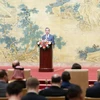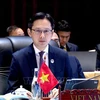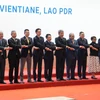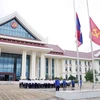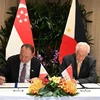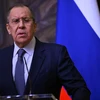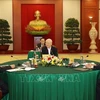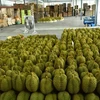The Asia-Pacific Economic Cooperation (APEC) Senior Officials’ Meeting officially commenced in Beijing, China on November 5, marking the beginning of a series of events that are part of the week-long APEC Summit.
Chaired by Chinese Deputy Foreign Minister Li Baodong, the meeting aims to prepare for the upcoming APEC Summit, including the APEC Ministerial Meeting, the APEC CEO Summit, and the 22 nd APEC Economic Leaders’ Meeting (AELM), which are scheduled for November 10-11.
The host will hold a number of dialogues on the promotion of regional linkages on November 8.
During the APEC Summit, representatives from member economies will focus on intra-regional ties, the formation of the Asia- Pacific Free Trade Area, and measures to boost economic and trade cooperation.
They will also review the achievements made over the last 25 years since the founding of APEC, and discuss orientations for future cooperation within the region.
As many as 15 documents are expected to be approved during the Summit, including a statement of the senior officials and a joint statement of the Ministerial Meeting.
In addition to senior officials of the 21 APEC member economies, the event includes the participation of more than 1,500 entrepreneurs from 500 international enterprises and 500 Chinese firms, which operate in manufacturing, finance, trade, services, mining, and information technology.
APEC was founded in 1989 and has 21 member economies: Australia, Brunei, Canada, Chile, China, Hong Kong (China), Indonesia, Japan, the Republic of Korea, Malaysia, Mexico, New Zealand, Papua New Guinea, Peru, the Philippines, Russia, Singapore, Taiwan (China), Thailand, the US and Vietnam. It aims to promote economic growth and prosperity in the region.
This year marks the 25th anniversary of APEC, which is now the highest-level mechanism for cooperation on a wide range of issues in the Asia-Pacific region, serving as a major platform for discussion on regional cooperation.
Since the adoption of the Bogor Declaration 20 years ago, the average tariff level in the Asia-Pacific region has dropped by 12 percent; total regional trade volume increased eight-fold; and nearly 200 cooperation projects are implemented in 30 different fields every year. Foreign direct investment (FDI) into the region surged to 10.6 billion USD in 2011 from only 2.5 billion USD in 1994.-VNA
Chaired by Chinese Deputy Foreign Minister Li Baodong, the meeting aims to prepare for the upcoming APEC Summit, including the APEC Ministerial Meeting, the APEC CEO Summit, and the 22 nd APEC Economic Leaders’ Meeting (AELM), which are scheduled for November 10-11.
The host will hold a number of dialogues on the promotion of regional linkages on November 8.
During the APEC Summit, representatives from member economies will focus on intra-regional ties, the formation of the Asia- Pacific Free Trade Area, and measures to boost economic and trade cooperation.
They will also review the achievements made over the last 25 years since the founding of APEC, and discuss orientations for future cooperation within the region.
As many as 15 documents are expected to be approved during the Summit, including a statement of the senior officials and a joint statement of the Ministerial Meeting.
In addition to senior officials of the 21 APEC member economies, the event includes the participation of more than 1,500 entrepreneurs from 500 international enterprises and 500 Chinese firms, which operate in manufacturing, finance, trade, services, mining, and information technology.
APEC was founded in 1989 and has 21 member economies: Australia, Brunei, Canada, Chile, China, Hong Kong (China), Indonesia, Japan, the Republic of Korea, Malaysia, Mexico, New Zealand, Papua New Guinea, Peru, the Philippines, Russia, Singapore, Taiwan (China), Thailand, the US and Vietnam. It aims to promote economic growth and prosperity in the region.
This year marks the 25th anniversary of APEC, which is now the highest-level mechanism for cooperation on a wide range of issues in the Asia-Pacific region, serving as a major platform for discussion on regional cooperation.
Since the adoption of the Bogor Declaration 20 years ago, the average tariff level in the Asia-Pacific region has dropped by 12 percent; total regional trade volume increased eight-fold; and nearly 200 cooperation projects are implemented in 30 different fields every year. Foreign direct investment (FDI) into the region surged to 10.6 billion USD in 2011 from only 2.5 billion USD in 1994.-VNA


